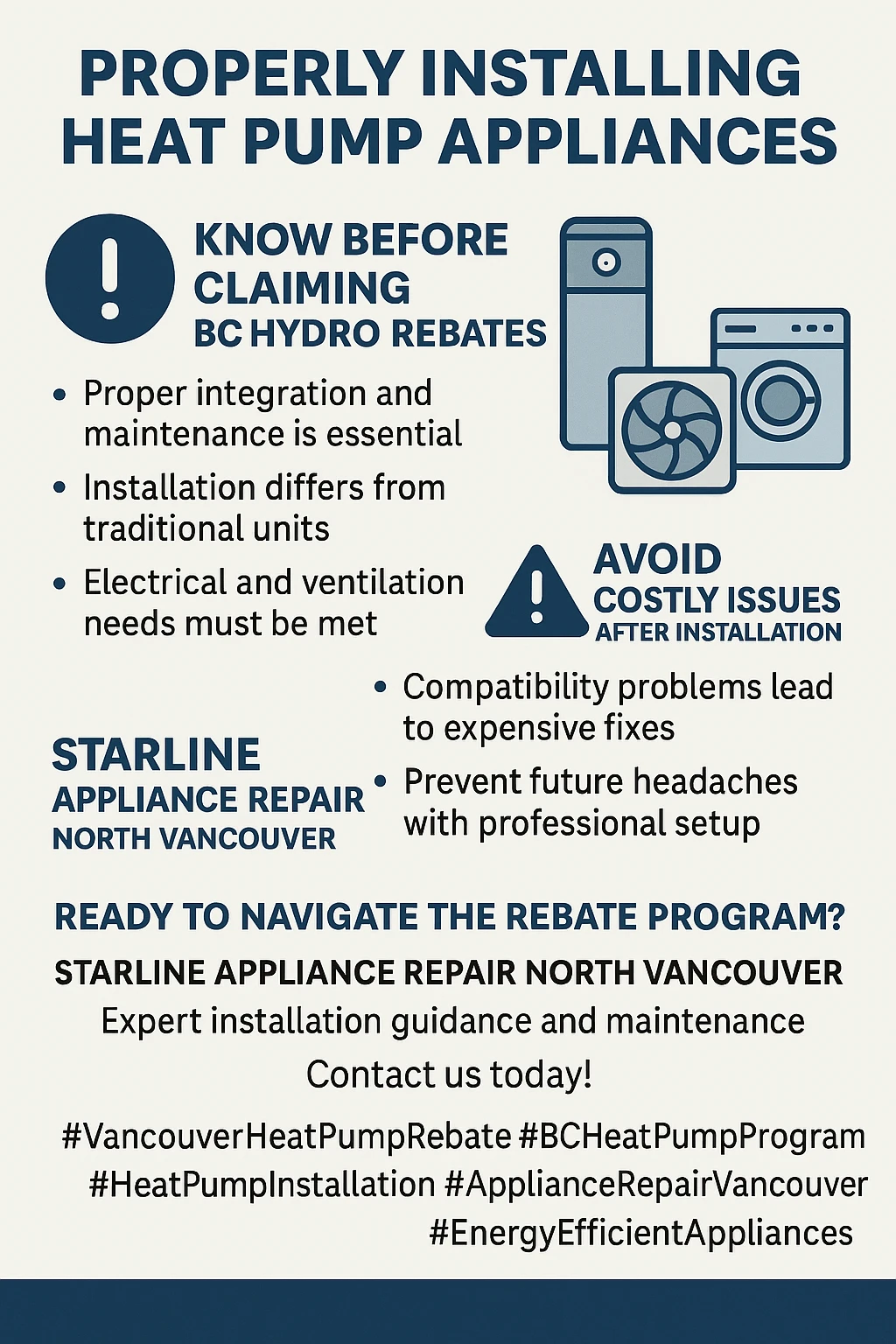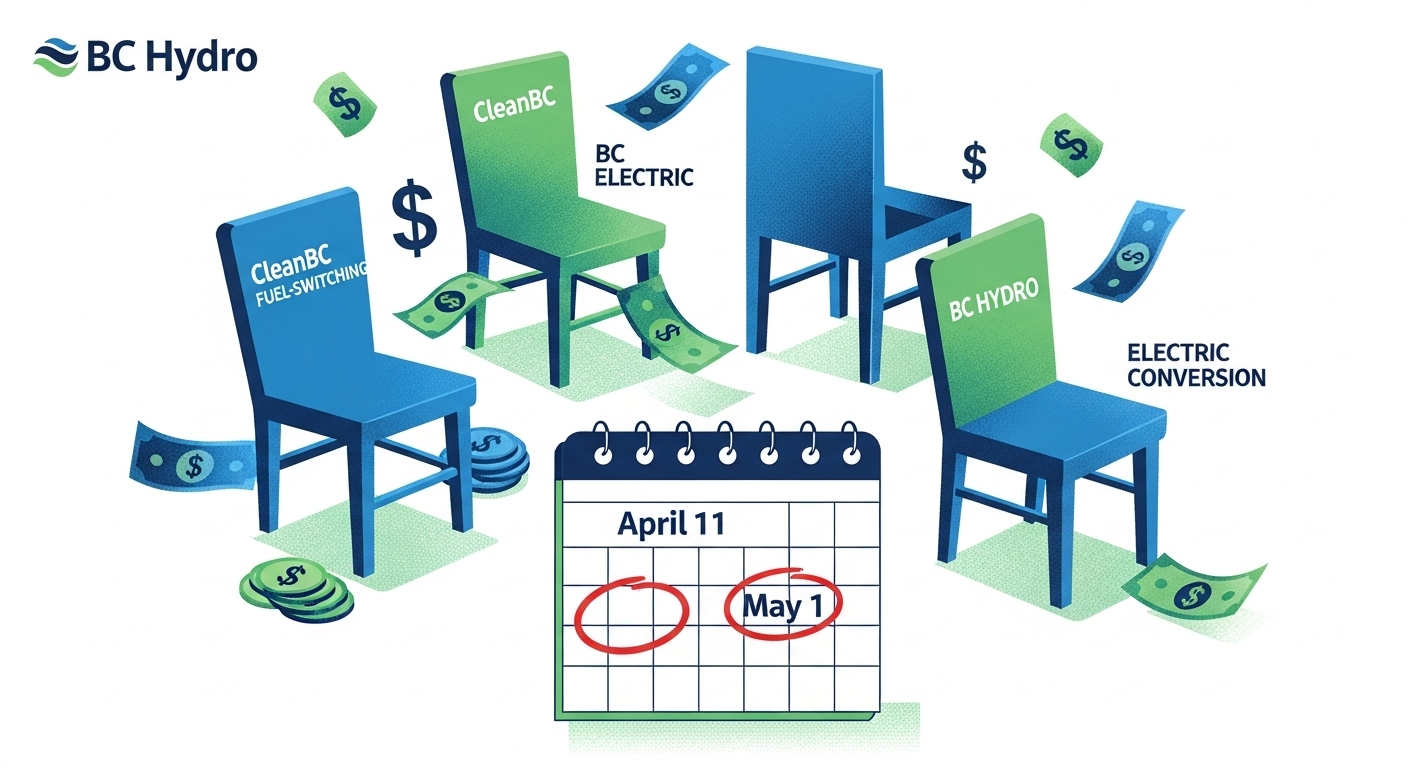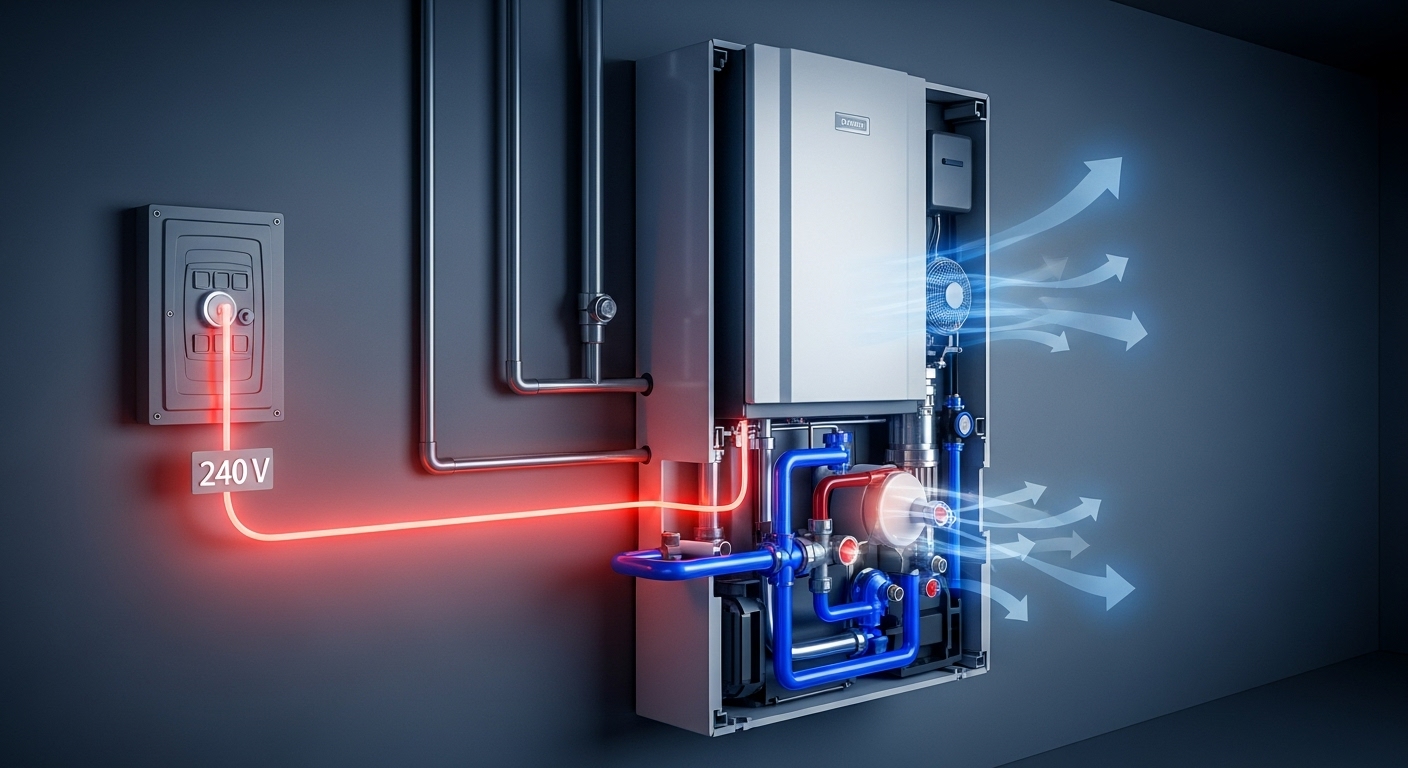How Vancouver’s Upcoming Heat Pump Rebate Program Is Creating Installation and Repair Confusion: What Homeowners Need to Know About Heat Pump Water Heaters, Dryers, and HVAC Integration Before Claiming Your BC Government Incentives
Thinking about upgrading to a heat pump in Vancouver but feeling totally overwhelmed by all the rebate changes and installation requirements? You’re definitely not alone – the recent changes to BC’s heat pump incentive programs have created a perfect storm of confusion that’s leaving even experienced homeowners scratching their heads.
Picture this: You wake up one morning, excited about finally ditching your ancient electric baseboards for a sleek new heat pump system. You’ve heard all the buzz about government rebates covering thousands of dollars, and you’re ready to jump on the eco-friendly bandwagon. But then you start digging into the details, and suddenly you’re drowning in a sea of acronyms, cancelled programs, new requirements, and installation standards that seem to change faster than Vancouver’s weather patterns.
Here’s the thing – Vancouver’s heat pump rebate landscape just went through some major shake-ups in 2025, and frankly, it’s created more questions than answers for most homeowners. The CleanBC fuel-switching rebates that everyone was talking about? Yeah, those ended in April. The BC Hydro programs? They’ve been completely restructured as of May. And don’t even get me started on the maze of contractor certifications, electrical upgrades, and compatibility issues that nobody warns you about until you’re already knee-deep in the process. [IMAGE PLACEHOLDER FOR IMAGE1]
As someone who’s been following Vancouver’s home improvement scene for years, I’ve watched this rebate confusion unfold in real-time, and it’s honestly pretty frustrating. You’ve got homeowners making expensive mistakes because they don’t understand which programs are still active. Contractors are giving conflicting advice about everything from sizing to electrical requirements. And meanwhile, the government incentives that are supposed to make heat pumps more affordable are actually creating barriers because the paperwork and requirements are so complex.
Key Outtakes:
- The $3,000 CleanBC fuel-switching rebate ended April 11, 2025, but BC Hydro now offers up to $4,000 for electric-to-heat-pump conversions with completely different requirements
- Heat pump water heaters and dryers require specialized electrical work that most homeowners don’t budget for, often adding $2,000-5,000 in unexpected costs
- Installation quality issues including oversizing and improper temperature settings are plaguing 89% of heat pump installations, undermining both performance and rebate eligibility
- Vancouver’s new mechanical permit requirements and contractor certification standards create additional hoops to jump through before claiming any rebates
- Income-qualified programs through CleanBC still offer up to $16,000 in rebates, but the application process requires pre-approval and extensive documentation

The Great Rebate Shuffle: What ActuallyChanged and Why Everyone’s Confused

Let me break down what’s been happening with Vancouver’s heat pump rebate programs, because honestly, it’s been a bit of a gong show. Until April 11, 2025, homeowners could snag a sweet $3,000 rebate through the CleanBC Better Homes program for switching from gas, oil, or propane heating to electric heat pumps. This was the big kahuna that everyone was talking about – the rebate that made fuel switching financially attractive for thousands of Vancouver homeowners. But then, plot twist: the program got axed.
Now, if you had work completed or quotes in hand before that April deadline, you might still be able to claim the rebate through August 31, 2025. But here’s where it gets tricky – you need to prove your contractor gave you a formal quote before April 11, and it has to include all the specific details that satisfy program requirements. I’ve already heard horror stories of homeowners getting their applications rejected because their “quote” was actually just a rough estimate scribbled on the back of a business card.
Meanwhile, BC Hydro completely restructured their rebate offerings as of May 1, 2025, creating a whole new set of rules that focus on electric-to-electric conversions rather than fuel switching. The new BC Hydro program offers up to $4,000 for whole-home heat pump installations, but only if you’re replacing existing electric heating like baseboards or electric furnaces. If you had a gas furnace and were hoping to switch to a heat pump, you’re basically out of luck with the mainstream rebate programs – unless you qualify for the income-based programs, which I’ll get to in a minute.
The timing of these changes has created this weird limbo period where contractors are still quoting projects based on old rebate amounts, homeowners are confused about what’s actually available, and everyone’s trying to figure out if their specific situation qualifies for anything. It’s like musical chairs, but with thousands of dollars on the line and nobody’s sure when the music actually stopped. [IMAGE PLACEHOLDER FOR IMAGE2]
What makes this whole situation even more frustrating is that the CleanBC Energy Savings Program for income-qualified households is still running strong, offering rebates up to $16,000 for heat pump installations. But accessing these enhanced rebates requires jumping through hoops that many homeowners find intimidating – income verification, pre-registration, working with certified contractors, and navigating bureaucratic processes that can take weeks or months to complete.
Heat Pump Water Heaters: The Silent Complexity Everyone Underestimates

Here’s something nobody tells you when you start researching heat pump systems: heat pump water heaters are probably the most technically demanding appliance upgrade you’ll ever tackle, and they’re creating installation headaches that catch homeowners completely off guard. Unlike your regular hot water tank that just needs a gas line or basic electrical connection, heat pump water heaters are basically mini air conditioners that extract heat from your basement or utility room air to warm up your water.
The electrical requirements alone are enough to make your head spin. Most heat pump water heaters need dedicated 240-volt circuits with 15-30 amp capacity, which means you’re looking at significant electrical work in most Vancouver homes. If you currently have a gas water heater, there’s probably no 240-volt circuit anywhere near your water heater location, so you’re talking about running new electrical lines through finished walls, crawl spaces, or attics. That’s easily $1,500-3,000 in electrical work that most people don’t budget for. [IMAGE PLACEHOLDER FOR IMAGE3]
But here’s where it gets really interesting – and where a lot of contractors drop the ball. Heat pump water heaters like the SANCO2 system need to be installed in specific environments to work properly. They perform best in unheated spaces like basements or utility rooms where they can extract “waste” heat from the surrounding air. Install one in your main living space, and it’ll actually cool the air around it, making your regular heating system work harder. It’s like having a reverse space heater running 24/7.
The installation location thing is where I see homeowners get burned constantly. A contractor shows up, sees your water heater is in a finished basement or utility closet, and just swaps it out without considering the thermal dynamics. Six months later, you’re wondering why your heating bills went up even though you installed this super-efficient water heater. The answer? Your heat pump water heater is stealing heat from your conditioned space, and your furnace or heat pump is working overtime to replace it.
Temperature stratification is another technical rabbit hole that most people don’t see coming. Heat pump water heaters store water at lower temperatures than conventional gas units – typically 120-140°F instead of 160-180°F. This means your tank configuration and plumbing setup become critical for maintaining adequate hot water supply. The SANCO2 system, for example, requires specific four-port valve placement and minimum daily usage of 25 gallons to maintain proper performance. Miss these details, and you’ll end up with a system that short-cycles, doesn’t provide enough hot water, and burns out prematurely.
The good news is that manufacturers are finally waking up to these installation barriers. Companies like Rheem and A.O. Smith are

